Expert Tips for Selecting the Best Backpacking Stove for Your Next Adventure
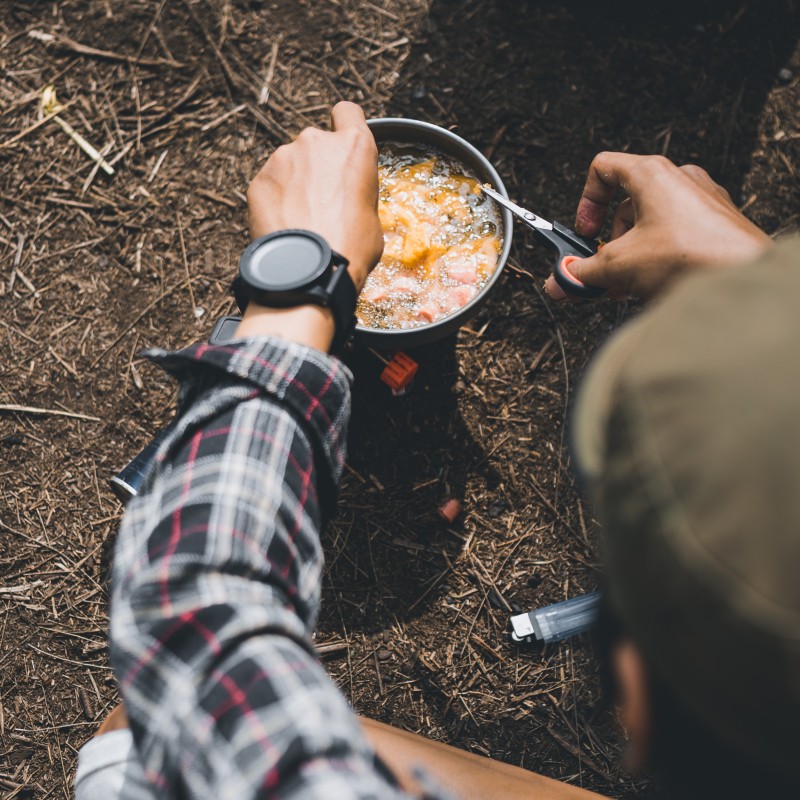
Backpacking is a great way to explore the great outdoors and experience nature firsthand. Whether you are hiking in the mountains or camping in the wilderness, having the right equipment is vital to ensure a safe and enjoyable trip.
One of the most crucial pieces of equipment for any backpacker is a cooker to prepare food and drinks on the trail.
However, with so many different types and brands of backpacking stoves available, choosing the right one can be overwhelming.
In this article, we’ll provide expert tips and guidance to help you choose the best backpacking stove for your next adventure. We’ll explore the different fuel types, cooker styles and other important factors to consider when choosing a backpacking stove so you can enjoy delicious meals and hot drinks in the wild.
So read on to find out how to choose the best backpacking stove for your next trip and make your outdoor adventures more enjoyable.
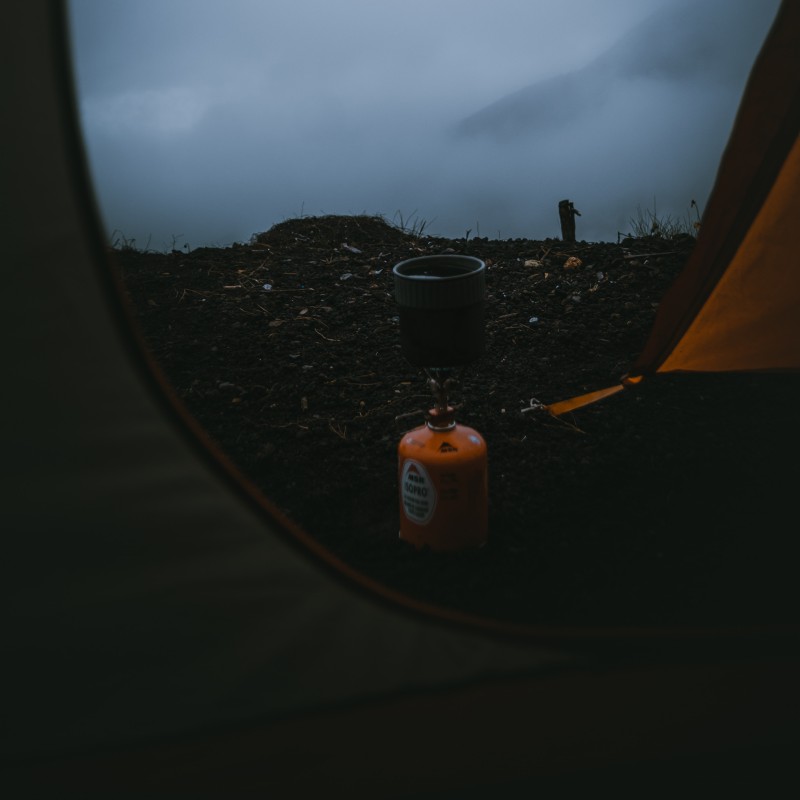
A reliable and efficient stove is essential for backpacking because it allows you to cook your meals as well as boil water for drinking or rehydrating food.
Because you won’t have access to the convenience of a kitchen or fast food restaurants when you’re out in the wilderness, having a stove that can provide you with hot meals and drinks is essential.
Furthermore, having a stove on your trip can help you save money and reduce the amount of waste you generate because you won’t have to rely on pre-packaged foods or disposable dishes.
As a result, it is critical to select a stove that is dependable, lightweight, and fuel-efficient, so you can enjoy delicious meals while staying fueled for your adventures.
When it comes to choosing a backpacking stove, the sheer number of options available can be overwhelming. There are different fuel types, cooker styles, sizes and features to consider, which can make it difficult to determine which cooker is best for your needs.
It is easy to get lost in a sea of product descriptions and reviews and end up feeling confused and indecisive. However, with a little research and guidance, you can find the right cooker to meet your cooking needs, budget and personal preferences.
In this article, we’ll provide you with expert tips and insights to help you make your choice and select the best backpacking stove for your next adventure.
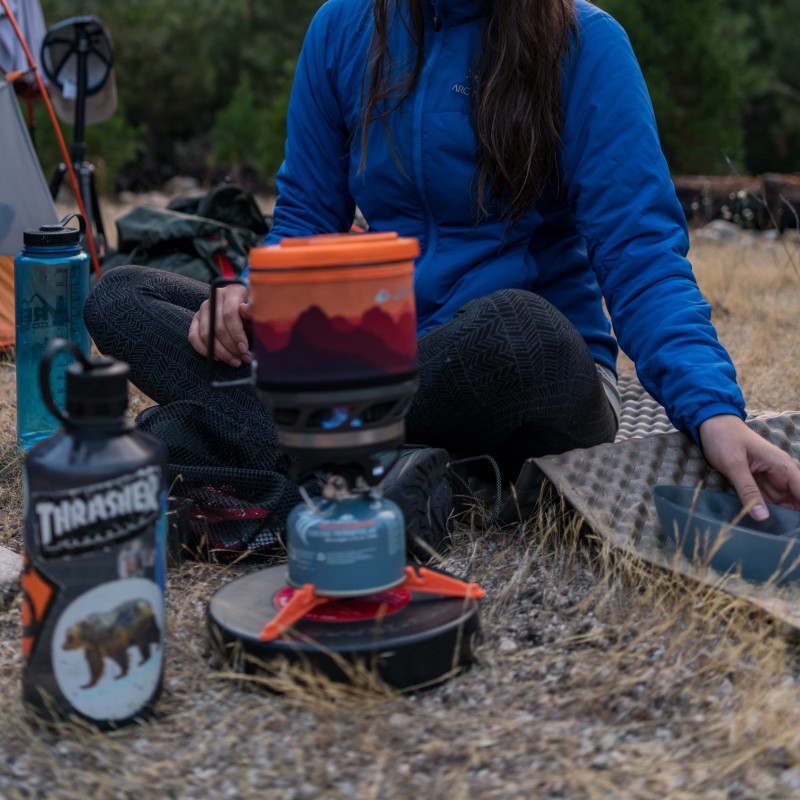
The goal of this article is to give you expert advice and insight into how to select the best backpacking stove for your needs. We understand that selecting a stove can be difficult, and we hope to make the process easier for you by breaking down the key considerations and providing you with actionable advice.
This article will help you make an informed decision whether you are a first-time backpacker or a seasoned adventurer. We’ll talk about things like fuel type, cooker style, weight and size, cooking needs, and environmental impact.
In addition, we will offer recommendations on the best backpacking cookers on the market. By the end of this article, you will have the knowledge and confidence to select a cooker that will ensure the success of your next backpacking trip.
Fuel Types
A multitude of criteria must be considered when selecting the best gasoline type for your purposes.
Canister gasoline is convenient, but it is also costly and wasteful. Liquid fuel is adaptable and efficient, but it takes more upkeep.
Solid fuel is lightweight and simple to use, although it can be difficult to locate and has a short burn life.
Knowing the benefits and drawbacks of each type might assist you in making an informed decision.
Overview of different types of fuel (canister, liquid fuel, solid fuel)
There are several types of fuel commonly used in backpacking stoves, each with its own set of benefits and drawbacks.
Canister fuel stoves operate on pre-packaged canisters of propane, butane, or a combination of the two, which are convenient and easy to use but can be costly and difficult to recycle.
Refillable bottles of white gas, kerosene, or alcohol are used in liquid fuel stoves, which are less expensive and more widely available but require more maintenance and can be messy to refill.
Solid fuel stoves use compressed fuel tablets or cubes, such as hexamine or Esbit, which are lightweight and have a long shelf life but produce a weak flame and leave a residue.
Each fuel type has advantages and disadvantages, so when selecting a backpacking stove, consider your specific needs and preferences.
Advantages and disadvantages of each type
Canister fuel stoves are popular among backpackers because of their convenience and ease of use. They are lightweight and compact, and they do not require priming or pumping.
However, canister fuel is expensive and difficult to recycle, and cold temperatures can affect the flame.
Liquid fuel stoves, on the other hand, are less expensive and perform better in cold weather. They are also adaptable, as various types of liquid fuel can be used depending on availability.
However, liquid fuel stoves require more upkeep and can be difficult to refill.
Solid fuel stoves are light and have a long shelf life, making them an excellent choice for long trips. They are also environmentally friendly because the fuel leaves little residue.
The flame produced by solid fuel stoves, on the other hand, is weak and unsuitable for cooking larger meals.
Overall, the fuel type you choose will be determined by your personal preferences, cooking requirements, and the availability of fuel in your intended destination.
Consider the advantages and disadvantages of each type and select the one that best meets your needs for your specific backpacking trip.
Considerations for choosing the right fuel type for your needs
There are several factors to consider when choosing a fuel type for your backpacking stove. To begin, consider the length of your trip as well as the amount of fuel you will require.
Canister fuel stoves are ideal for shorter trips where weight and packability are important, whereas liquid fuel stoves are ideal for longer trips where fuel efficiency is more important.
Second, think about the weather conditions you might encounter on your trip. A liquid fuel stove will be more efficient than a canister stove if you expect cold temperatures.
Third, consider the fuel availability in your intended destination. It is critical to select a fuel type that is readily available in the area to which you will be traveling.
Finally, think about the environmental impact of the fuel you select. Canister fuel is more difficult to recycle, whereas liquid fuel if properly disposed of, can be more environmentally friendly.
By taking these factors into account, you can select the best fuel type for your specific requirements and ensure that you have a dependable and efficient backpacking stove for your next adventure.
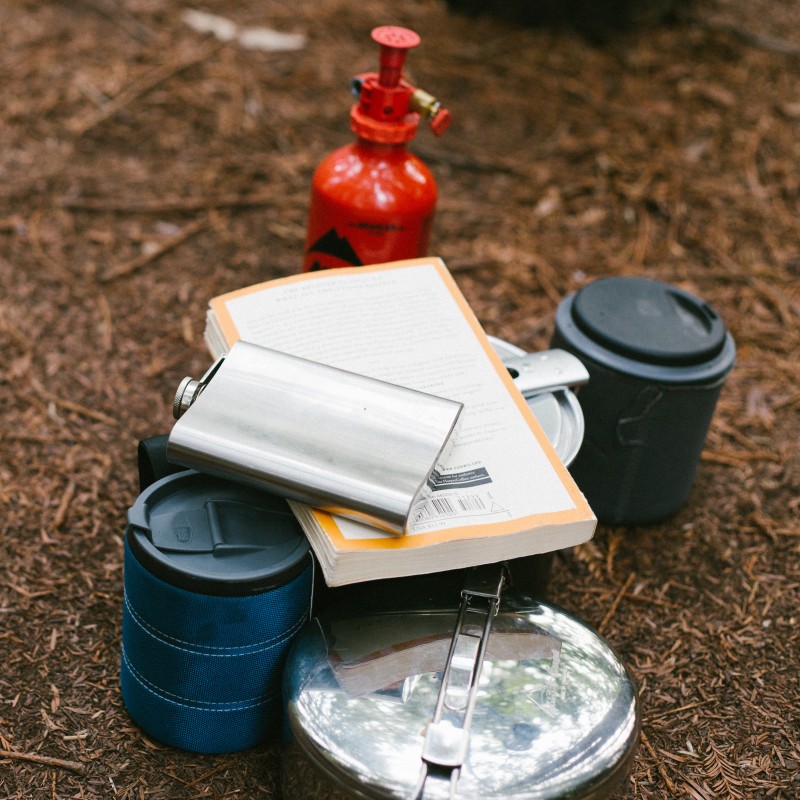
Stove Styles
The correct stove style for your needs is determined by your intended use.
Canister stoves are good for backpacking but not for long treks. Liquid fuel stoves are adaptable and efficient, but they require more upkeep.
Wood-burning stoves are ideal for camping, although they may be prohibited in some locations. Alcohol stoves are portable and easy to operate, but they heat quite slowly.
Knowing the benefits and drawbacks of each model can assist you in selecting the best stove for your needs.
Overview of different stove styles (canister, liquid fuel, wood-burning, alcohol)
Backpacking stoves come in a variety of styles, each with their own set of benefits and drawbacks.
Canister cookers are popular due to their portability and ease of use, making them ideal for short trips or backpackers.
Liquid fuel stoves are versatile and efficient, making them an excellent choice for lighter weight long distance travel.
Wood burning stoves are environmentally friendly and do not require fuel, but they are large and difficult to use in wet weather.
Alcohol stoves are portable and easy to use, but they may not produce enough heat to cook a large meal.
Finally, the type of cooker you select will be determined by your personal preferences as well as the specific needs of your backpacking trip.
It is critical to weigh the benefits and drawbacks of each style before deciding which one is best for you.
Advantages and disadvantages of each style
Backpacking stoves come in different styles that offer unique advantages and disadvantages depending on the trip and hiker’s preferences.
Canister stoves are lightweight, compact, and easy to use. They provide quick and efficient heat, making them suitable for solo hikers or small groups on short trips.
However, they tend to be less fuel-efficient than other types of stoves and may have issues in extremely cold weather.
Liquid fuel stoves are versatile and reliable, offering better performance in harsh environments than canister stoves. They can operate on different types of fuel, which is a major advantage on longer trips or in areas with limited fuel options.
However, they are more complex to use and maintain, and fuel spills can be hazardous.
Wood-burning stoves are eco-friendly and do not require carrying fuel, making them ideal for long trips where fuel resupply is difficult. They are also more efficient in heating water or cooking food than other stoves.
However, they can be bulky and challenging to use in wet or windy conditions.
Alcohol stoves are lightweight, easy to use, and affordable. They are suitable for solo hikers or short trips, and they don’t produce any hazardous emissions or fuel spills.
However, they have lower heat output and may not be suitable for cooking large meals or in windy conditions.
Choosing the right backpacking stove requires assessing the trip, fuel availability, and personal preferences.
Understanding the advantages and disadvantages of each style can help you choose the best backpacking stove that meets your needs.
Considerations for choosing the right stove style for your needs
When choosing the right backpacking stove, it’s essential to consider different factors, such as your trip’s length, environment, and personal preferences.
For instance, canister stoves are ideal for solo hikers or small groups on short trips, while liquid fuel stoves are suitable for longer trips or harsh environments where fuel options are limited.
Consider the trip’s length and the amount of fuel you’ll need to carry. Canister stoves are lightweight and require carrying less fuel, while liquid fuel stoves are bulkier and require carrying more fuel.
Also, consider the environment and weather conditions you’ll encounter. Wood-burning stoves are eco-friendly and do not require carrying fuel, making them ideal for long trips where fuel resupply is difficult.
However, they can be challenging to use in wet or windy conditions.
Your personal preferences also matter when choosing the right stove style. Alcohol stoves are lightweight, easy to use, and affordable. However, they have lower heat output and may not be suitable for cooking large meals or in windy conditions.
By considering these factors, you can choose the right backpacking stove that meets your needs and ensures a safe and enjoyable adventure.
Weight and Size
Weight and size are crucial factors to consider when selecting a backpacking stove. A lightweight stove can help you save weight in your pack, but a larger stove may be more efficient at cooking.
Combining weight and size with other criteria such as cooking requirements and fuel type might assist you in selecting the best stove for your journey.
Assess how much weight you’re willing to carry as well as the importance of cooking performance to your journey.
Importance of considering weight and size when choosing a backpacking stove
Weight and size are crucial considerations when choosing a backpacking stove as they directly impact your pack’s overall weight and space. A lightweight and compact stove will take up less space in your pack, leaving more room for other essential gear.
Additionally, a lighter stove will reduce the weight you carry, allowing you to move more efficiently and comfortably on the trail.
Conversely, a heavier stove will add unnecessary weight to your pack, making it more challenging to carry over long distances.
Therefore, it’s essential to choose a stove that strikes a balance between size, weight, and performance to ensure a comfortable and enjoyable backpacking trip.
How to balance weight and size with other factors (such as cooking needs and fuel type)
When choosing a backpacking stove, weight and size must be balanced with other considerations such as cooking needs and fuel type.
Begin by calculating your cooking requirements based on the number of people in your group, the types of meals you intend to prepare, and the length of your trip. This will assist you in determining the size and output of the stove required to meet your needs while keeping weight in mind.
Next, consider the type of fuel best suited to your trip. Carbon canister stoves are usually the lightest and easiest to use, making them an excellent choice for short trips. However, liquid fuel stoves are more versatile and efficient, making them more suitable for long trips in harsh conditions.
Finally, consider the stove’s overall design and features. Look for stoves that have a compact and lightweight design, but also include features like simmering control or a windscreen that will enhance the stove’s performance and cooking capabilities. Balancing all of these factors will help you choose a stove that is both lightweight and efficient while still meeting your cooking needs.
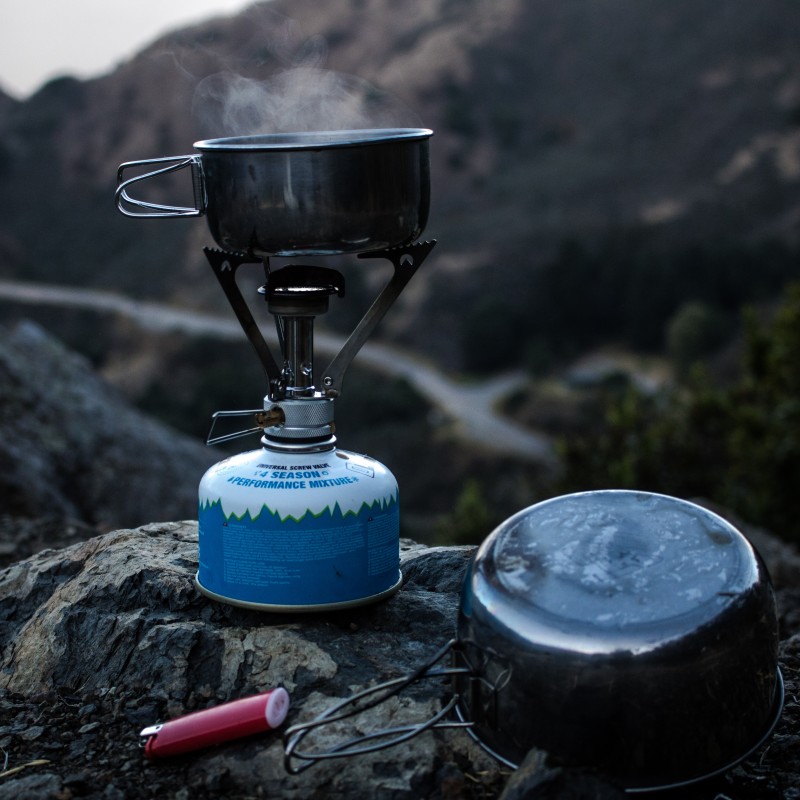
Cooking Needs
When choosing a backpacking stove, it’s important to consider your cooking needs. Group size and meal complexity are two key factors to consider.
A larger group may require a stove with a larger cooking surface, while a more complex meal may require a stove with more precise temperature control.
Look for stoves with features that meet your cooking needs.
Considerations for determining your cooking needs (e.g., group size, meal complexity)
Determining your cooking needs is an essential part of selecting a backpacking stove. One crucial consideration is group size.
The more people in your group, the larger stove and cooking surface area you will need. Larger groups may also require a stove that can boil water quickly and efficiently to keep meal prep times to a minimum.
Additionally, the complexity of the meals you plan to prepare will play a role in determining your stove’s size and features.
Simple meals like oatmeal or dehydrated meals may require only a small stove, while more complex meals that involve sautéing or simmering will require a larger stove with more precise temperature control.
Finally, the length of your trip will also impact your cooking needs. Longer trips will require a stove that is reliable, durable, and fuel-efficient.
By taking all of these factors into account, you can choose a stove that will meet your cooking needs and help ensure a successful backpacking trip.
How to choose a stove that meets your cooking needs
Choosing a stove that meets your cooking needs entails balancing several factors such as fuel type, stove style, weight and size, and cooking requirements. To begin, consider the size of your group as well as the complexity of the meals you intend to prepare.
A larger stove with precise temperature control may be required if you are traveling with a larger group or intend to prepare complex meals.
Next, think about what kind of fuel will be most convenient and efficient for your trip. Canister stoves are simple to use and ideal for shorter trips, whereas liquid fuel stoves are more versatile and ideal for longer expeditions.
Wood-burning and alcohol stoves are lightweight, environmentally friendly options that may be appropriate for specific trips or cooking requirements.
Finally, balance your cooking requirements and fuel type with the weight and size of your stove to ensure that you can carry it comfortably on your backpacking trip.
By considering these factors, you can select a stove that meets your cooking needs and contributes to a successful backpacking trip.
Environmental Impact
Different fuel types and stove styles have varying environmental impacts.
Canister fuels and alcohol stoves tend to have a lower impact, while wood-burning stoves can cause deforestation and air pollution.
When choosing a stove, consider the environmental impact of your fuel and stove choices. Look for stoves made from sustainable materials and fuels that are renewable or biodegradable.
Overview of the environmental impact of different fuel types and stove styles
When selecting a backpacking stove, it is critical to consider the environmental impact of various fuel types and stove styles.
Canister stoves emit less carbon monoxide and nitrogen oxides than liquid fuel stoves, but they are more difficult to recycle and generate waste.
Although liquid fuel stoves are refillable and require less packaging, they emit more pollutants than canister stoves.
Wood-burning and alcohol stoves are environmentally friendly options with low waste and emissions, but they may not be suitable for all trips.
When selecting a backpacking stove, it is critical to weigh the environmental impact of various fuel types and stove styles against your cooking needs and other factors.
Considerations for choosing a stove that minimizes environmental impact
When selecting a backpacking stove, keep the environment in mind. Some fuel types and stove styles can have a greater environmental impact than others.
Canister stoves, for example, emit fewer emissions than liquid fuel stoves, and wood-burning stoves can be an environmentally friendly option if the wood is sourced sustainably.
When choosing a stove, you should also consider fuel efficiency, as a more efficient stove will use less fuel overall and emit fewer emissions.
Finally, selecting a stove with a low environmental impact can help preserve the natural beauty of the wilderness areas where we enjoy backpacking.
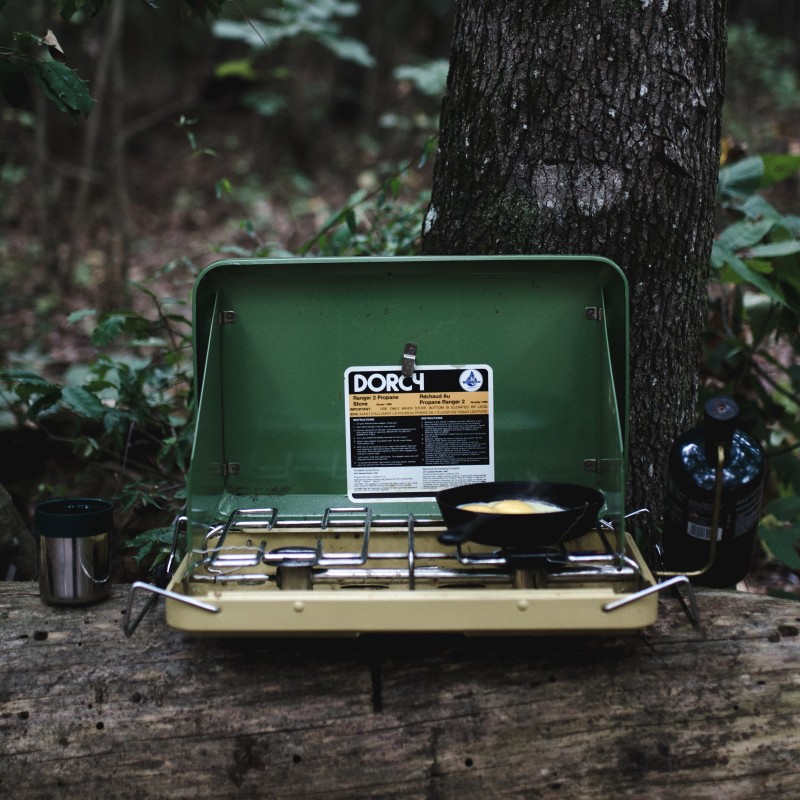
Top Backpacking Stoves
On the market, there are numerous excellent backpacking stoves.
Popular liquid fuel stoves like the MSR WhisperLite are dependable and effective but might be weighty.
The Jetboil Flash is a handy canister burner that boils water rapidly and is lightweight, but only offers a few cooking options.
Eco-friendly wood-burning stoves like the Biolite CampStove might not be permitted in some places. While selecting a stove, take your needs and tastes into account.
Detailed overview of the best backpacking stoves in the market
For outdoor enthusiasts, a detailed overview of the best backpacking stoves on the market can be a valuable resource. It can serve as a comprehensive guide to the various models on the market, as well as their features and benefits.
Each stove can be rated in such an overview based on criteria such as fuel type, weight, cooking time, ease of use, and durability.
Furthermore, the overview can include detailed descriptions and user reviews to assist potential buyers in making informed decisions about which stove best meets their needs.
This type of resource can save backpackers valuable time and money by providing trustworthy information to assist them in selecting the best stove for their next adventure.
Pros and cons of each stove
A detailed overview of the best backpacking stoves in the market would typically include a list of top-performing stoves, along with their pros and cons.
For example, a canister stove such as the MSR PocketRocket 2 is known for its lightweight and compact design, but its performance can be impacted in cold temperatures.
Meanwhile, liquid fuel stoves like the MSR WhisperLite are reliable in extreme conditions but are heavier and require more maintenance.
Wood-burning stoves like the BioLite CampStove 2 are an eco-friendly option but can be less efficient than other types and require a constant fuel supply.
Finally, alcohol stoves like the Trangia Spirit Burner are simple and lightweight but have longer cooking times and may not be suitable for large groups.
Evaluating the pros and cons of each stove can help backpackers make an informed decision based on their individual needs and preferences.
Recommendations based on personal preferences
Choosing the best backpacking stove ultimately depends on personal preference and individual needs. Factors such as cooking style, group size, weight and environmental influences can all play a part in determining the ideal stove for your adventure.
Based on the pros and cons outlined in the article, it is important to consider which stove type and fuel type will best meet your needs.
Some backpackers may prioritise efficiency and durability, while others may prioritise eco-friendliness and versatility. It is also important to consider factors such as the price and availability of fuel in your area.
Ultimately, the best backpacking cooker is the one that meets your personal needs and allows you to fully enjoy your outdoor adventures.
Conclusion
Choosing the right backpacking stove can greatly affect your camping experience. When making your decision it is important to consider factors such as fuel type, cooker type, weight and size, cooking needs and environmental impact.
Carbon canisters, liquid fuels, solid fuels, wood burning and alcohol stoves all have their pros and cons, so it is important to weigh these factors carefully before making a decision.
When it comes to specific models, the market offers a wide range of options to suit different needs and preferences.
It is advisable to choose a cooker that meets your personal preferences and needs and to consider factors such as ease of use, durability and overall performance.
By following these expert tips, you can choose the best backpacking stove to help you enjoy your camping trip to the fullest.
Choosing the right backpacking stove can make your outdoor adventure a great success. By considering factors such as fuel type, cooker style, weight and size, cooking needs and environmental impact, you can make an informed decision on which cooker is best for you.
With the wide range of cookers on the market, choosing the perfect cooker can be overwhelming. But by following expert tips and advice, you can narrow down your choices and find the best cooker for your needs and preferences.
So don’t hesitate to use these tips to make an informed decision and enjoy a successful and comfortable outdoor adventure with the perfect backpacking stove.
